Want another word usage quiz to keep you sharp during quaran-times? Don’t worry; I’ve got you covered.
[ays_quiz id=’6′]
If you missed the first three quizzes, you can find them here:
When you need Japanese language services, I sweat the details for you.
Want another word usage quiz to keep you sharp during quaran-times? Don’t worry; I’ve got you covered.
[ays_quiz id=’6′]
If you missed the first three quizzes, you can find them here:
A lot has happened since my last post. George Floyd was murdered by Minneapolis police officers, protests against his killing are being carried out across the country (and around the globe), and many cities have imposed curfews.
We’re a nation in crisis, but there are 400 years of history behind this crisis. And not all of us were taught that history in school. This week, many fellow non-Black people on my Facebook feed have expressed a desire to learn about it. I need to learn more about it, too.
I’ve seen a spate of posts about books and articles white people can to read to better understand the history of racism in the United States. That’s a great thing. But some people have trouble reading that much material. Are there audiovisual things people can reference?
Yes! Marie Claire suggests Documentaries About Black History to Educate Yourself With.
There are podcasts that can help, too. I’ve talked about my love of the podcast Stuff You Missed in History Class in at least one previous post. Since I happen to know that podcast well, tonight I put together a list of episodes on African-American history. That doesn’t mean this is the One True History Podcast–just the one I know best and could put together a cheat sheet for in a few hours. I hope it helps someone!
If you’re like me, any healthy distraction is welcome in these quaran-times. The smaller, the better. And ideally, something I can do without guilt.
So it seems like the perfect time to resurrect “Which Word?”
If you missed the first two of my word usage quizzes, you can find them here:
And now, on to…
[ays_quiz id=’3′]
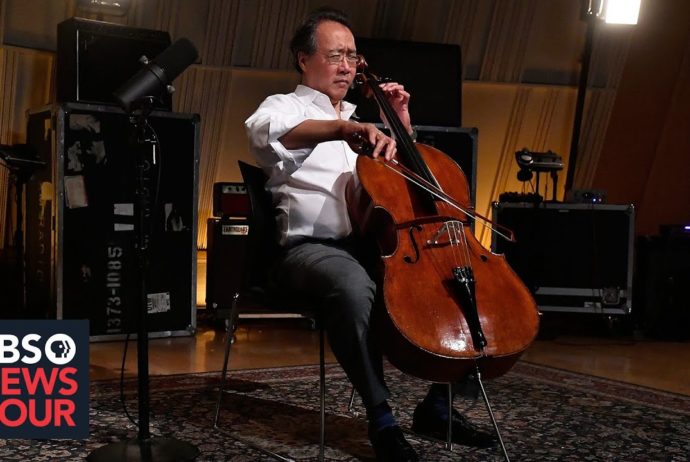
Welcome! This pinned post is where you can find links to my COVID-19 playlists.
Read on to learn about the playlist initiative and what you’ll find in each list, or boldly click on one of these quick links to start listening.
Sacred #SongsOfComfort: YouTube | Sacred #SongsOfComfort: Spotify | Secular #SongsOfComfort: YouTube

My last post, 8 Movies to Distract You from COVID-19, was about catching up on classic movies to distract yourself during this crisis. Distraction is a valuable mental health tool, because it gives us the space to not be anxious all the time. And movies seemed like a good bet, because they only take a couple of hours, which is great for those of us who still don’t have much free time.
But what if you don’t have access to Netflix or Amazon Prime? What if you need something fun and interesting that’s free?
Well, my friend, there is plenty out there to explore. Here are a few audio & visual options from your friendly neighborhood audiovisual translator.

Do you need a safe, fun distraction from the global pandemic engulfing all of us? I think we all do, and I love that so many artists are doing their part from within their areas of expertise.
Orchestras around the world are offering free live concerts online. Cellist Yo-Yo Ma has started a #SongsofComfort initiative. Art historian Ada Palmer has popularized the hashtag #SomethingBeautiful on Twitter. And in the crowdsourcing domain, readers of The Guardian have put together a recommended reading list.
As a film & TV translator, the first thing that occurs to me is, why not catch up on some classic movies you’ve always meant to get around to, or revisit your favorites?
So, here’s a list of classics to watch on Amazon Prime and Netflix while you’re quarantined or self-isolating. (…Okay, maybe the sushi documentary isn’t a classic, but sushi is classic, am I right?)
Enjoy!
Here in the United States, we’re talking about another mass shooting.
It doesn’t matter what day you read this post on; that opening sentence will still be true. We have a lot of them here. We talk about them a lot. We typically don’t do anything beyond talking, but that part may change one day.
That day probably isn’t today. Today we’re still talking. And I’m a translator, so I’m meta. I want to talk about the conversation.
The specific mass shooting we’re talking about today was an act of racially motivated terrorism committed by a white supremacist man. That’s not unusual, either. Racially motivated violence has been a specialty of ours since back when we were still a British colony, and white supremacy is on the rise, here and around the globe.
The national conversation about it has managed to hit on the usual questions: Should we officially agree that people of color have the same human rights as white people? Should we officially agree that women have the same human rights as men? Should we officially agree that immigrants have the same human rights as current US citizens?
You might not have heard those questions phrased exactly that way. Don’t worry; I’m a translator. Let me translate them into some other forms: Are white supremacists “terrorists,” or are they just “misguided”? Should we address the fact that most mass shooters are men with a history of violence against women, or would mentioning that be hurtful to the men who never shoot anybody? When people talk about mass shootings, are they really just distracting us from the more pressing immigration crisis?
Those are the questions I hear all around me.
As far as I can tell, what it all boils down to is this: We each have a circle in our mind where we put all the people whom we think should have human rights.
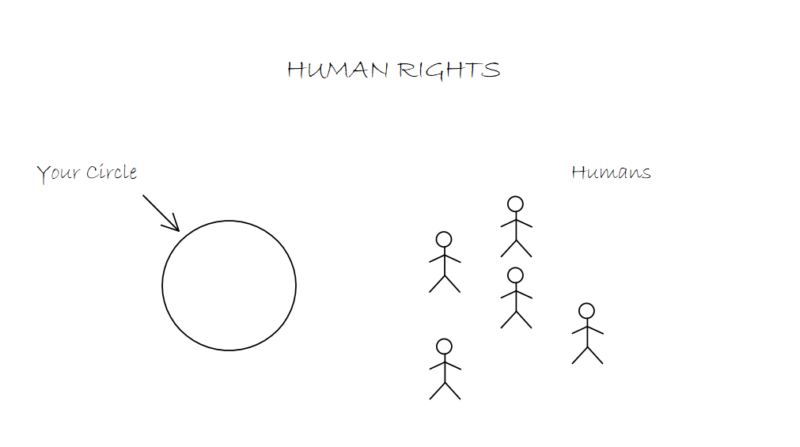
Whether by nature or nurture, some people’s circles seem to be bigger than others. Still, we all have to decide for ourselves which human beings should get human rights. So we either have to move people into the circle or draw the circle around the people.
All of those questions above definitely make the conversation about which people get to move into the circle.
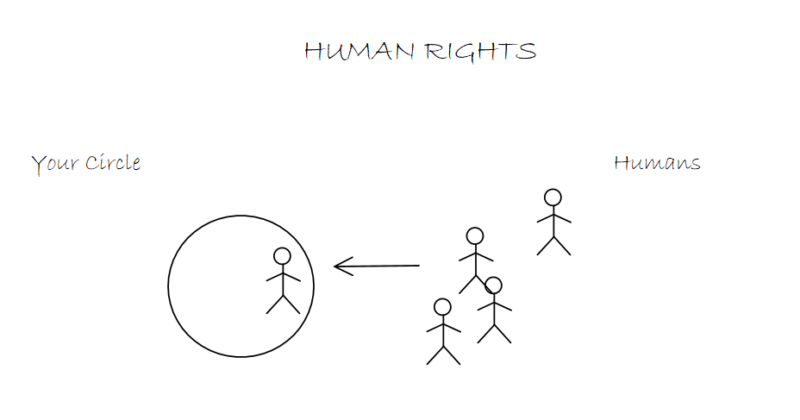
In this conversation we’re having about gun violence (or is it about race? or is it about gender? or is it about nationality?), it seems implied that since all of us have finite circles, we need to decide for ourselves how best to fit people in there. Maybe we go with the “first come, first served” rule until the circle is full. Maybe we say people of a certain skin color get priority entry. Maybe we say cisgender people get priority entry. Maybe we say people whose families came to the United States during a certain date range get priority entry. Maybe everybody gets rated on some complex system of sexual attractiveness, educational level, reading speed, and physical fitness.
But whatever the system, whatever size the circle, eventually this happens…
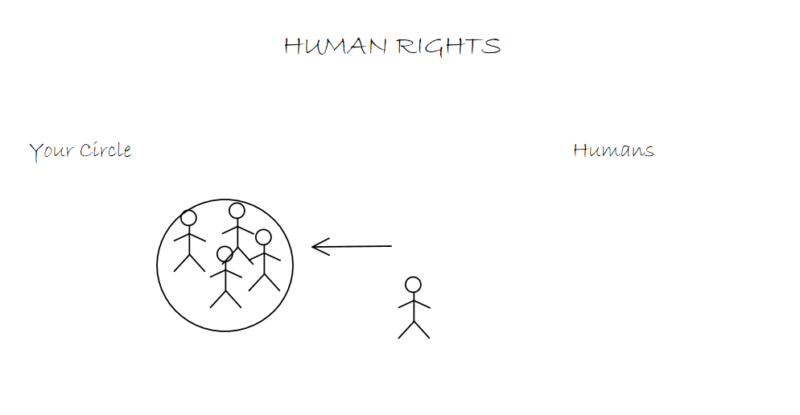
The circle is looking pretty full. It doesn’t look like there’s room for that last person. Maybe they were the “brownest one,” or the “fattest one,” or the “slowest one,” or just the unluckiest one. For whatever reason, not everybody fit in the circle!
But wait.
Human rights don’t take up space.
I imagined this circle. This is all conceptual. This is me, introspecting about how big the “Who gets human rights?” circle is. This my neighbor, introspecting about the same thing.
Every time we wonder if a white supremacist is a terrorist in the same way a member of ISIS is, or question whether it’s “fair” to talk about how abusive men commit most mass shootings, or mention immigration and mass shootings at the same time like they are inherently connected issues, that’s us deciding that we don’t want everybody in the circle. That’s us deciding that human rights aren’t “human rights”; they’re rights we grant only to specific humans.
Because if we did want everybody in this imaginary circle…
We’d just imagine a bigger circle.
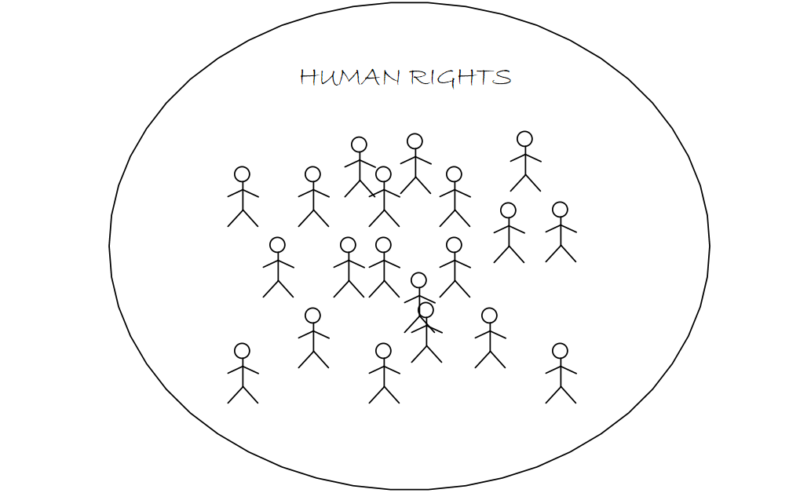
My vision is the “draw the circle around the people” one. Everybody is inside the circle by default. If someone looks like they might fall outside the circle, well, I control my vision, and I can choose to expand the circle. I might not like that person, but me choosing to exclude them would always be a choice, and never a necessity.
Your vision of humanity is your imagination at work.
The size of your circle is the size of your imagination.
And any failure to grant human rights to every single human being is a failure of imagination.
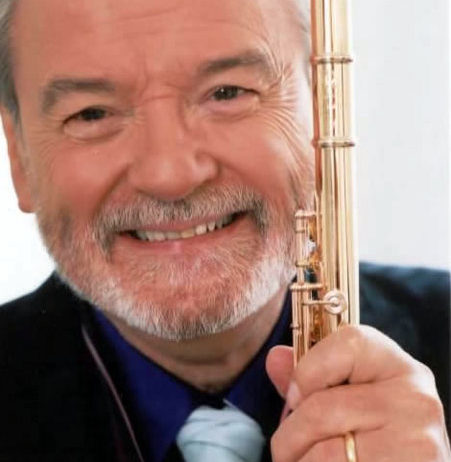
Watching artists over a long arc of years reveals a lot of interesting things: What changes, what stays the same. What you thought were their strengths, what their strengths turn out to be.
James Galway was one of my favorite flutists growing up. My aunt bought me his CDs and at least one book about him. Like so many, I liked the twinkle in his eye. The way he was more accessible to the viewer than Jean-Pierre Rampal; the way both of them made it look easy, but Galway made it look like he was having fun. I once called him a “jolly elf.”
As an adult, I went to see him perform live with the Dallas Symphony Orchestra. My significant other at the time was mystified by my “jolly elf” characterization, because by then he was no longer young. The twinkle in his eye was still firmly in place, but much of the bounce was gone. And yet, I was truly touched by this performance. Continue Reading →
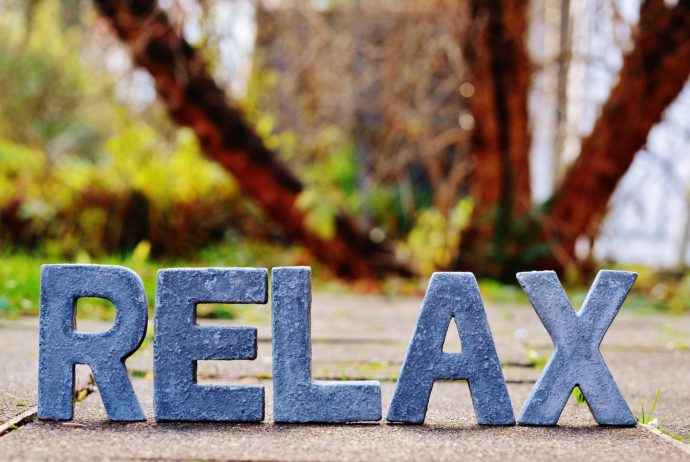
Welcome to the holidays: a season full of good food, wonderful concerts, and crazy, epic stress.
Many translators and other computer-based workers are chained to our desks, muscles tight, practically vibrating with the stress of December’s usual insane deadlines. Me, I’m freaking out a little more every time I look at my email accounts… the business one or the personal one.
Maybe we’re managing our stress with exercise, as this blog has discussed before, or maybe we’re using another coping method, or maybe we’re just choosing to fling ourselves recklessly into the void. Hey, I’m in no place to judge. But I think most of us are probably experiencing some seasonal increase in stress.
Unfortunately, with stress often comes pain.
So, today I’d like to share my simplest pain control technique–something that regularly helps me both at my desk and while I’m standing on one leg in the yoga studio. It’s simple, you can do it sitting down, and all you need is 20 seconds and the tongue in your mouth.
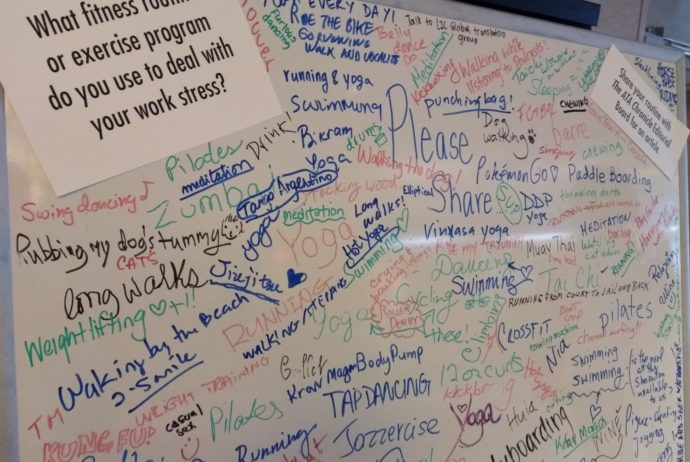
The whiteboard pictured above made its appearance at this year’s American Translators Association conference, and it kept us entertained all weekend long:
My dog usually walks me three times a day #LifeAsAFreelance #DOGtool https://t.co/XMG5YfrNtN
— Transcripsi (@Transcripsi) October 25, 2018
Mi héroe es el/la que puso crying and breaking things https://t.co/8YB6Hi3lwH
— Evelyn Antelo (@eveantelo) October 25, 2018
As you can see, a lot of us weighed in. There are many gems in there–I’m partial to the one about running from court to jail and back–but the whole thing got me thinking about how this is a really important question. How do we stay healthy and manage our stress?
The number of serious responses both on the whiteboard and on Twitter clue us in to the fact that exercise really does work:
My productivity definitely went up when my physical therapy started including regular exercise. The time it takes us much less than the time gained through the increased energy. https://t.co/hheiMvadeH
— Ada Palmer (@Ada_Palmer) October 25, 2018
We’re all different, but we all need to get this whole fitness thing done somehow. So I figured I’d share the set of tools I personally use to get the job done. Here we go… Continue Reading →